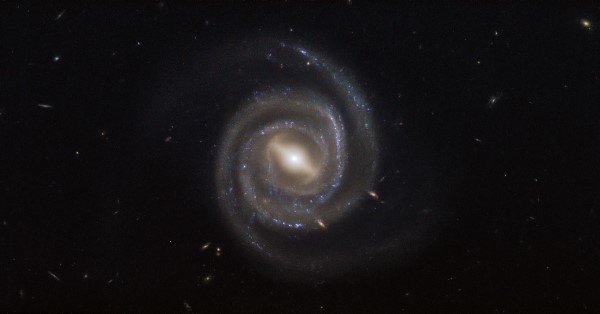



Swijjy [swij-ee] noun
[1] To be a whole system made of flowing parts.
[2] To be replaced, piece by piece, over time.
[3] A system which is holistically permanent yet atomically transient.
Imagine the movement of a spiral galaxy.

Looks like a ninja star or something, right? Spinning around like a wheel? Actually, it doesn't quite move like that. From a distance, the arms don't move much at all, even though all the stars are orbiting very quickly around the galactic center.
How? Because, for reasons unknown, stars slow down in the areas where we see bright galactic arms, and move quickly in the dark areas in between. These are called density waves, and they are similar to the wave that moves across a body of water or the bubble of congested traffic that moves backwards from a road accident. So, considering these waves, how do you know where a galaxy's arm begins and ends? What's the actual shape of the arm if the stars that make up the arm are coming and going so quickly?
A school works the same way. Every year, seniors leave, and freshmen come in to take their place. So, what's the real population of a school over a long period of time? It's not useful to think of it like a permanent body. A population such as this flows like a section of a stream - or the arm of a galaxy.
I haven't yet come across a word to describe this kind of structure, so I'm going to make one: swijjy. If someone asked you where the ocean ends and the beach begins, you would say, well, of course, it's quite swijjy. It's changing all the time.
I really wanted a word for this phenomenon because I find my experience of my own body is very, very swijjy. Food moves quick through my tubes and whatever doesn't get flushed into the plumbing gets popped out as sweat or spit or burned energy. Every breath I take diffuses through every one of my cells. Where does the air end and my body begin? Well, of course, it's quite swijjy.
Fire burns continuously and without interruption. It is always consuming fuel and always liberating smoke. Everything is either mounting upwards to serve as fuel, or sinking down wards after having nourished the flame. It follows that the whole of reality is like an ever-flowing stream, and that nothing is ever at rest for a moment. The substance of the things we see is in constant change. Even as we look at them, some of the stuff of which they are composed has already passed into something else, while fresh stuff has come into them from another source. This is usually summed up, appropriately enough, in the phrase "All things are flowing" (panta rei), though this does not seem to be a quotation from Herakleitos. Plato, however, expresses the idea quite clearly. "Nothing ever is, everything is becoming"; "All things are in motion like streams"; "All things are passing, and nothing abides"; "Herakleitos says somewhere that all things pass and naught abides; and, comparing things to the current of a river, he says you cannot step twice into the same stream" (cf. fr. 41). These are the terms in which he describes the system.
The model that emerges from swijjology is of complex systems with no permanent parts but very steady forms. Even patterns that seem to have a swijjulating coefficient of zero still flow continuously with their environment: a spoon is not trading matter and respiration with the environment, like a living creature, but is fully charged with electrons that come and go freely, as well as waves of hot and cold temperatures that both define the nature of the spoon and are in constant movement. Pure swijjiness.
If you look at the source code for the simulation below, you will see that I have chosen the noun swijjulon to define a particle of a swijjy system.
The mouse = a swijjulonic attractor.
Yellow swijjulon = swijjish coefficient of 0.
Blue swijjulon = swijjish coefficient of 1.